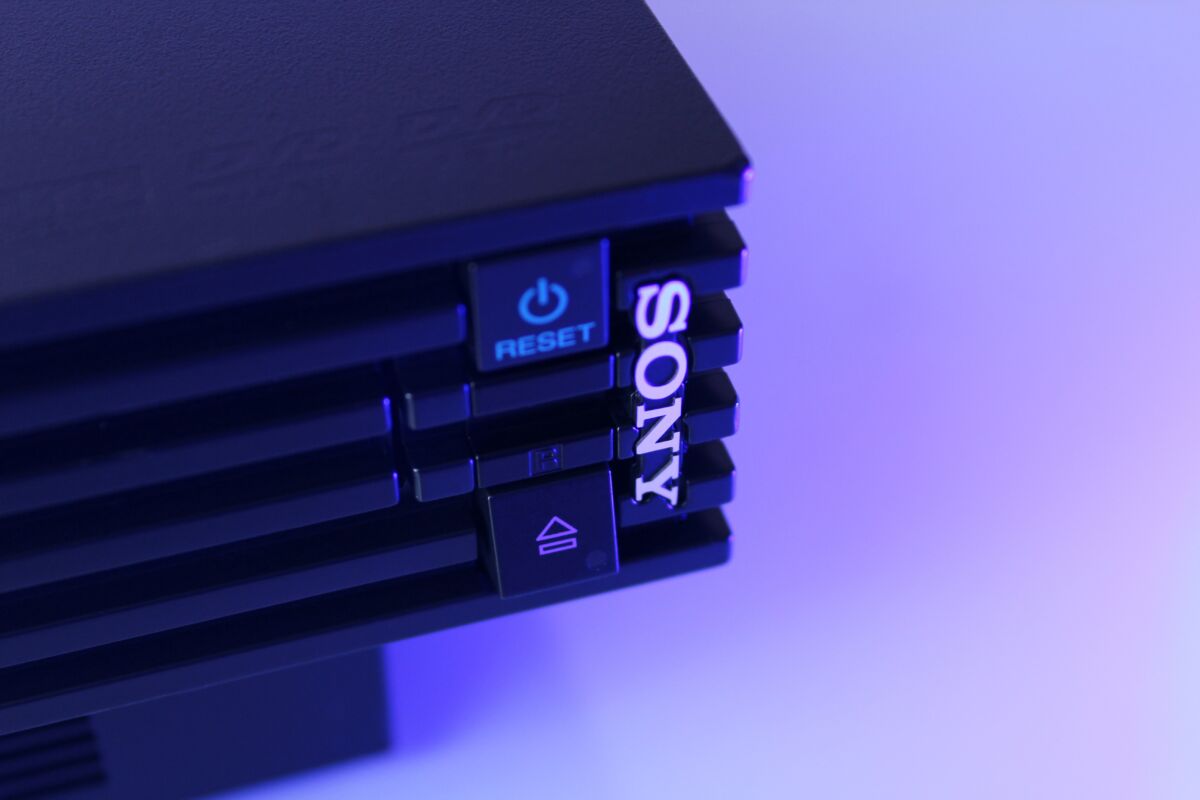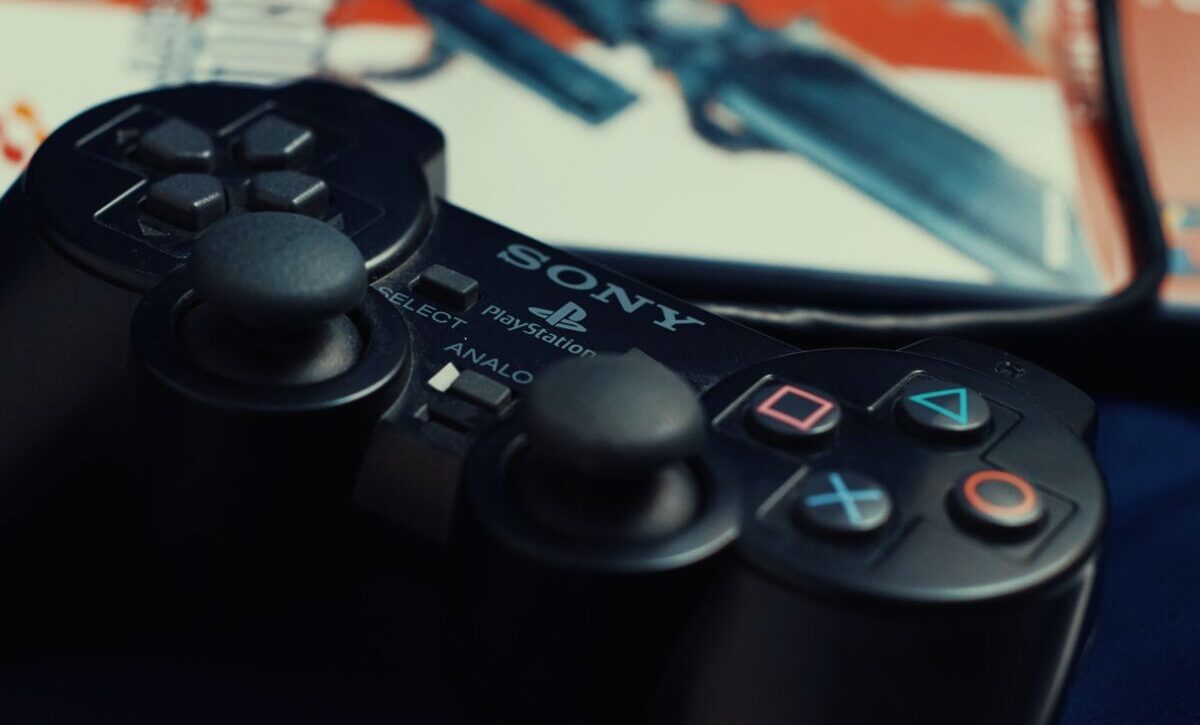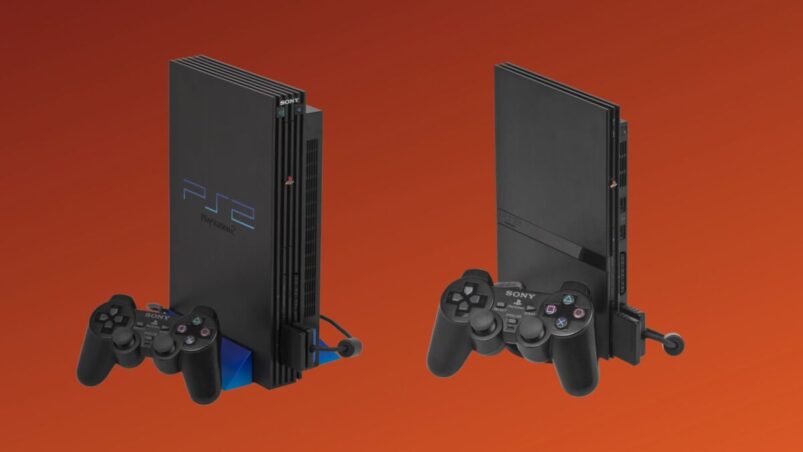Often regarded as the best video game console generation, the PS2 delivered memorable gaming thrills and adventures. It launched series that still run strong today and continued legacy franchises first introduced on its smaller, greyer predecessor. But one of the generation’s best moments wasn’t a video game release at all. It was when Sony found a way to take the PS2’s chunky design and debloat it down to a much more manageable slimline version.
The PS2 and PS2 Slim delivered two different experiences for players, and though logic would suggest the newer model was the favored of the two, history tells a more jumbled story. To better understand the quandary players had when deciding between the fat PS2 and the thinner iteration, it’s worth getting to know the biggest differences between the original PS2 and the PS2 Slim.
PS2 Original vs. PS2 Slim Size & Weight

If this were boxing, the two consoles would be in completely different weight classes. The original PS2 came in at a sizable 4.85 lb (2.2 kg) and measured 3.1” (7.87 cm) x 11.9” (30.2 cm) x 7.2” (18.3 cm).
The slimline version, as the name suggests, was thinned out quite a bit and weight 1.98 lb (.9 kg) and measured 1.1” (2.79 cm) x 9.09” (23.1 cm) x 5.98” (15.2 cm).
PS2 Original vs. PS2 Slim Disc Tray
Clearly, for Sony to thin out the fat PS2 by such a drastic margin, there must have been significant changes made. And there were. Chief among them was the disc tray, which was completely unrecognizable from one console to the other.
The Original’s Greatest Flaw
The PS2 original’s disc tray ejected from the face of the console, sliding out to present a groove that the disc sits in. You’d plop the disc in, press the “eject” button again, and the tray would retract back into the console. The problem? Nothing was holding the disc in place. It was very much so a well, and instead of clicking into place on top of the optic drive, it just hovered above it.
With nothing to stabilize the disc, the console was at its best when laying horizontally. Stood up vertically, the slightest nudge could jostle the disc and cause the game to freeze or glitch.
What the Slim Did Differently
Alternatively, the slimline version featured a top-loading disc drive that allowed discs to click into place, similar to the original PlayStation. Instances of disc read errors due to dislodged discs dropped drastically with this update, though then players faced some instances of the lid not latching closed or needing to press down gently on the lid for the disc to be properly read.
With the redesign, the PS2 could be stood upright when used with a circular vertical stand.
PS2 Original vs. PS2 Slim Networking & HDD Support
Another noticeable difference between the PS2 original and the PS2 Slim was a removable cover available only on the fat version. Not every player took advantage of what this slot was used for, but many that did were playing games like Final Fantasy XI and Resident Evil Outbreak online.
The slot was for a Hard Disk Drive (HDD) and an attached Network Adapter that delivered one of the earliest instances of online multiplayer for consoles. It technically predates Xbox Live with its 2001 release date in Japan. The two peripherals went hand-in-hand as the former required the latter to connect to the original PS2 and receive power.
Sporting a 40GB capacity, the HDD could reduce load times and backup memory card data, but its most useful (albeit controversial) purpose came with the unofficial and slightly illegal HD Loader software. This user-created software allowed players to load games directly onto the HDD, bypassing the need for a disc and skirting copy protection.
At the time the slim PS2 came out, there were only 35 North American titles that supported the drive, though the number of games that could go online was significantly higher.
Did the PS2 Slim Support the HDD?
The lifespan of the HDD was very short-lived. By the time the PS2 Slim was released, it was already on its way out, and the remodeled console would ditch support entirely. However, Sony was wise to keep around online play, and the Slim was equipped with a built-in ethernet port. Unfortunately, the loss of the HDD expansion slot meant games like Final Fantasy XI couldn’t be played on the Slim.
PS2 Original vs. PS2 Slim Performance

Noisy fans have often been an issue throughout the PlayStation ecosystem. Though the PS4 was arguably the biggest offender, the PS2 original had its own problems that were surprisingly rectified when the console shrunk down. Part of the solution was removing the power supply from the console, though the external units were known to overheat.
For the most part, the PS2 Slim outperformed its larger alternate due in part to the updated Emotion Engine (EE) and Graphics Synthesizer (GS) chips, which served as primary processors for the two consoles. Updates to the BIOS and drivers allowed the slim version to run better than the original, especially the final slimline version (SCPH-9000x) that was released in 2008 as the most efficient and smallest version.
PS2 Original vs. PS2 Slim Backwards Compatibility
Now, this is where things get a little strange.
Changes were made to the laser lens for the slim PS2 that were intended to make the console more compatible with the PSOne library and read PS2 games faster. Oddly enough, even in later iterations of the slim version, compatibility still proved to be a problem. While there were few games that were wholly incompatible with the console, many PS1 and some PS2 games were found to experience glitches and freezing on various models of the PS2 Slim.
Which PS2 Version Was Better?
Between the PS2 original and the PS2 Slim, the thinner console was undoubtedly a more powerful version. Which was better, though, depends on what you’re using it for. If the HDD is at all important, then the original is the way to go. Otherwise, the enhanced power and portability of the PS2 Slim are difficult changes to pass up.
READ NEXT: How To Emulate PS2 Games on PC
Some of the coverage you find on Cultured Vultures contains affiliate links, which provide us with small commissions based on purchases made from visiting our site.

